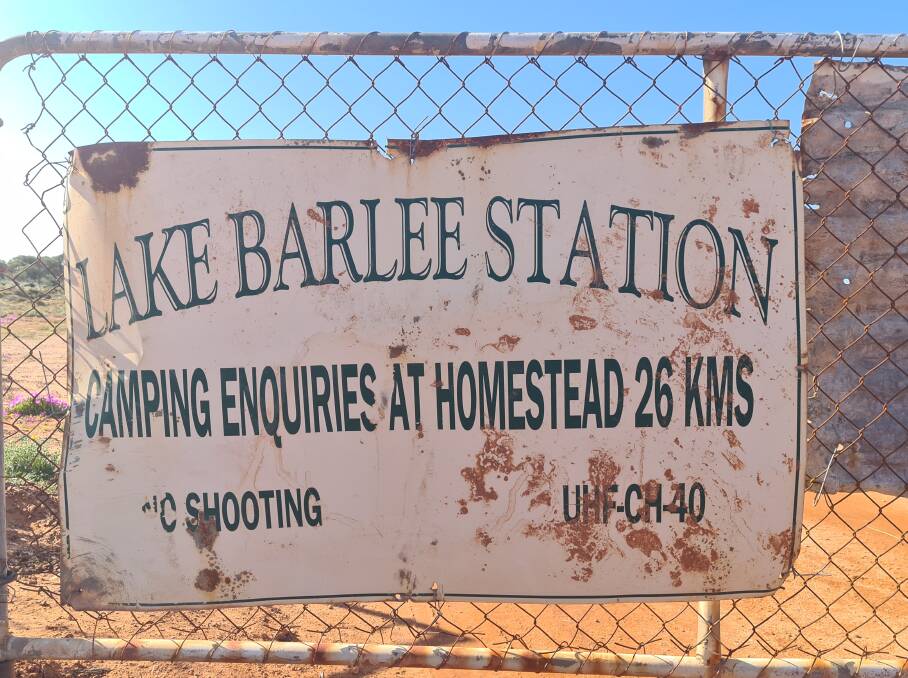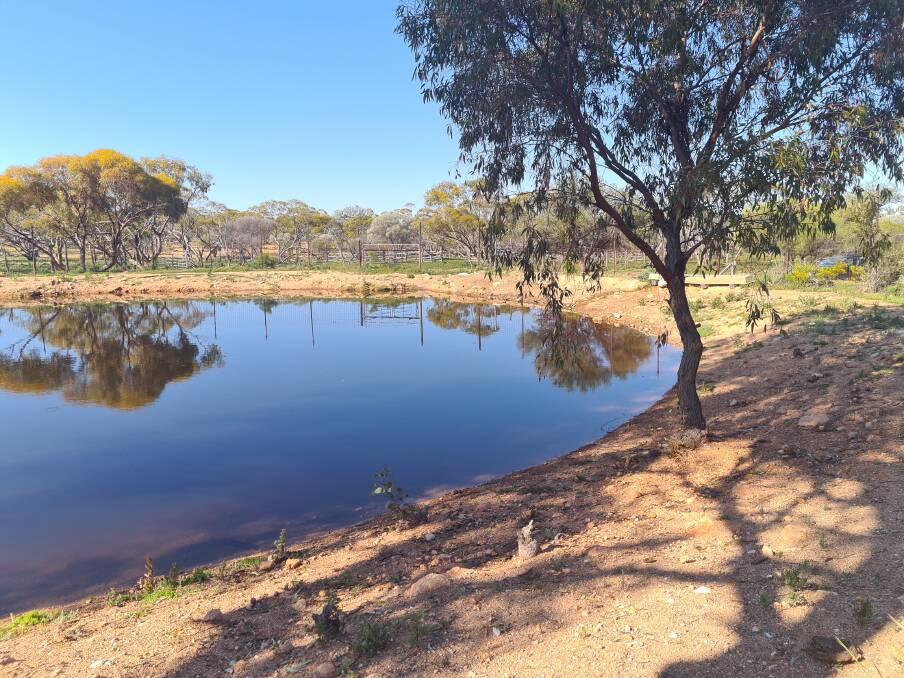
THE carbon sector is having a growing influence on prices being paid for land in Western Australia's Southern Rangelands.
Properties that couldn't be shifted for $600,000-$800,000 a few years ago are understood to now be selling for more than $3 million if they have a registered and reporting project under the Carbon Farming Initiative.
Real estate agents have also noted an increase in the number of expressions of interest (EOI) when stations come up for sale, primarily driven by groups seeking to offset carbon emissions - but also from existing landholders.
Read more:
One recent transaction in the Shire of Sandstone is understood to have had nine EOI submitted in the competitive sales process.
This property has a regeneration project registered by the Clean Energy Regulator that uses new land management practices to allow native trees to regenerate and reach forest cover in carbon estimation areas (CEAs).
Australian carbon credit units (ACCUs) are earned when carbon is stored in vegetation within the CEAs as a result of undertaking project activities.
It is understood at least eight stations in the Southern Rangelands have projects registered with the Clean Energy Regulator, according to a spokesman for the Regulator.
Elders Real Estate pastoral specialist Greg Smith said any stations with carbon sequestration projects were proving very attractive to potential buyers - both those seeking to offset emissions and those who saw the value in having an extra/diverse income from carbon projects.
"This is injecting some significant money into the Rangelands," Mr Smith said.
"It is an exciting time to be in the market there.
"I believe there will be more and more effects of carbon offset coming into the value of agricultural land."

Mr Smith said Elders currently had three stations listed for sale with carbon projects in various states of becoming registered.
He said these were being offered to buyers in an off market sale process.
"It is great to see an injection of fresh income into the Southern Rangelands, which have struggled for many years to generate sufficient cash flow to invest in infrastructure," he said.
"The carbon sequestration income - in most cases - is being reinvested into making the properties more efficient, improve cattle genetics and change herd management, all while producing food in the most natural way there is - 100 per cent free-range and chemical-free."
At Challa station, Debbie and Ashley Dowden are the fifth generation to run the operation, which was taken up by the Dowden family in 1888.
Traditionally a sheep station, they moved into cattle after experiencing too many stock losses from wild dogs.
In recent years, Ms Dowden said they had been contacted several times by carbon companies wanting to put projects on their station.
"But we didn't want to go into it if we had to greatly reduce our cattle numbers and increase tree areas," Ms Dowden said.
Eventually, the couple decided to take on a carbon project in May 2020.
It involves managing their cattle to keep them off the existing native forest and allowing the forest to regenerate.
"We did agree to reduce our cattle numbers by one third and maintain a slightly lower stocking rate so cattle don't need to go into revegetation areas," Ms Dowden said.
"We removed water points from those areas and erected strategic fencing.
"We also use self-herding technology to control where the cattle go and we have undertaken rehydration works to capture water for the trees.
"So, we do a lot to make sure the carbon sequestration project is a success."
Ms Dowden said there was no doubt the carbon project had significantly increased the value of their station and other stations with carbon projects.
Elders Real Estate senior rural real estate executive Simon Cheetham said pastoral areas were selling strongly, and those suited to carbon sequestration projects were particularly sought after.
"The influence carbon can have on sale prices has been most evident in the Southern Rangelands, the Goldfields and the Murchison," Mr Cheetham said.
"We are getting constant inquiries for pastoral land - from established station owners, investors and corporates who are looking to offset their emissions.
"Elders experienced a record year for station and farm sales across the State in 2022 and demand remains very strong."

Lake Barlee is one example of a station recently sold by Mr Smith.
The property was promoted as offering an opportunity to "sort out the cattle herd and turn it into a dual-income property".
A registered carbon project had been established with 15,418 ACCUs issued in 2021-22, and 16,271 issued in 2022-23.
Lake Barlee was rated to carry 1100 cattle units and with approximately 400 head of cattle included in the sale.
Mr Cheetham said Lake Barlee was the first property taken to the open market with a carbon project and the competition had now seen new benchmarks reached in what the market will pay for properties with these sorts of projects registered and reporting.
There have been numerous off market sales in the past and the power of a competitive market-based sales campaign has seen values reached that exceeded all expectations.
Accountant and carbon project developer John Thomson said his firm, JBC Corporate, was involved in purchasing three stations in the Southern Rangelands.
While there has been much hype about station values, he said having a carbon project was not as straightforward as many would believe and stations needed to be well managed.
"We have a run of very good seasons, high cattle prices and significant increases in rural land - all of which have contributed to the increase in station values," Mr Thomson said.
"There are examples where pastoralists wishing to expand have out-bid carbon farmers.
"Not every station will produce more revenue from carbon than cattle."
Mr Thomson said there were properties that were registered for carbon projects in 2018 that now would not get approved by the regulator if they were resubmitted.
"You need government and regulator consent to register a project and I would say there would only be 50-60 properties with the potential to have sequestration projects in WA," he said.
"Properties which have registered and have reported, and which are not subject to the eligible interest holder consent process, are worth a lot more than ones which are facing the prospect of dealing with an increasingly demanding regulator.
"The eligible interest process is expensive, time consuming and complex.
"We are seeing some carbon service providers simply sitting back waiting to see how it pans out."
Mr Thomson said this issue and the risk of projects not reaching the prescribed forest cover were the main reasons why the corporates were shying away from pastoral projects.
He said they often saw them as both too risky, too hard to manage and were not prepared to put in the work to get eligible interest holder consent.
Mr Thomson said those stations that had been over-grazed were worth more for carbon projects because the starting base line was low.
He said the majority of these properties have very poor infrastructure and it would be very challenging to make it work with just cattle.
"Unlike blue gums, carbon in the rangelands is already seeing more people living in the region - which is a great outcome," he said.
"The ones that have been de-stocked for some time have no carbon project value and are less valuable.
"There are disappointed property owners who under the current rules will never qualify simply because destocking over an extended period has allowed the regeneration process to occur.
"Whilst the proposed new diversification leases contemplated by the new legislation currently going through Parliament will assist those pastoralists with leases less than 25 years, it is yet to be seen how this will play out.
"Government may be tempted to reconsider how pastoral leases are 'valued' as part of this process - similar to what we watched happened to the rock lobster industry under the then Minister."
Carbon has effectively privatised rangelands landcare on a scale never ever contemplated by Government, according to Mr Thomson.
"While there are still reports being written and conferences being organised, cash from carbon is going to water, fencing and improving management - which is exactly what the sector needs," he said.
"Confidence and cash are key ingredients to sustainable conservation projects."
Mr Thomson said his company managed any station properties it bought in-house.
"We don't de-stock the properties because we need the grazing to control grasses and reduce fire risks," he said.
"The cattle also create ground disturbance to promote seed germination."
Mr Thomson said they put in solar pumps and watering points to spread the cattle out and aimed to remove all vermin to reduce total grazing pressure.
He said given only a small proportion of the properties actually produce carbon, increasing watering points and strategic fencing will mean stock numbers will not change.
"It is the dry seasons that will be the limiting factor, not the part of the property with restricted stock access," he said.
"New entrants and carbon-centric buyers in the current market are forgetting how dry the Murchison can be - and for extended periods.
"It will be interesting to see how pastoralists react to the first dry period while trying to balance the visible impact on their stock whilst not really sure how the grazing pressures and dry seasons will have on carbon sequestration rates."
Mr Thomson said his company was continually seeking to buy more stations for carbon projects.
But he said with the current challenges being presented by the regulator, such as eligible interest holder consent requirements and demonstrating adequate suppression of the rangelands, it would be more discerning.


